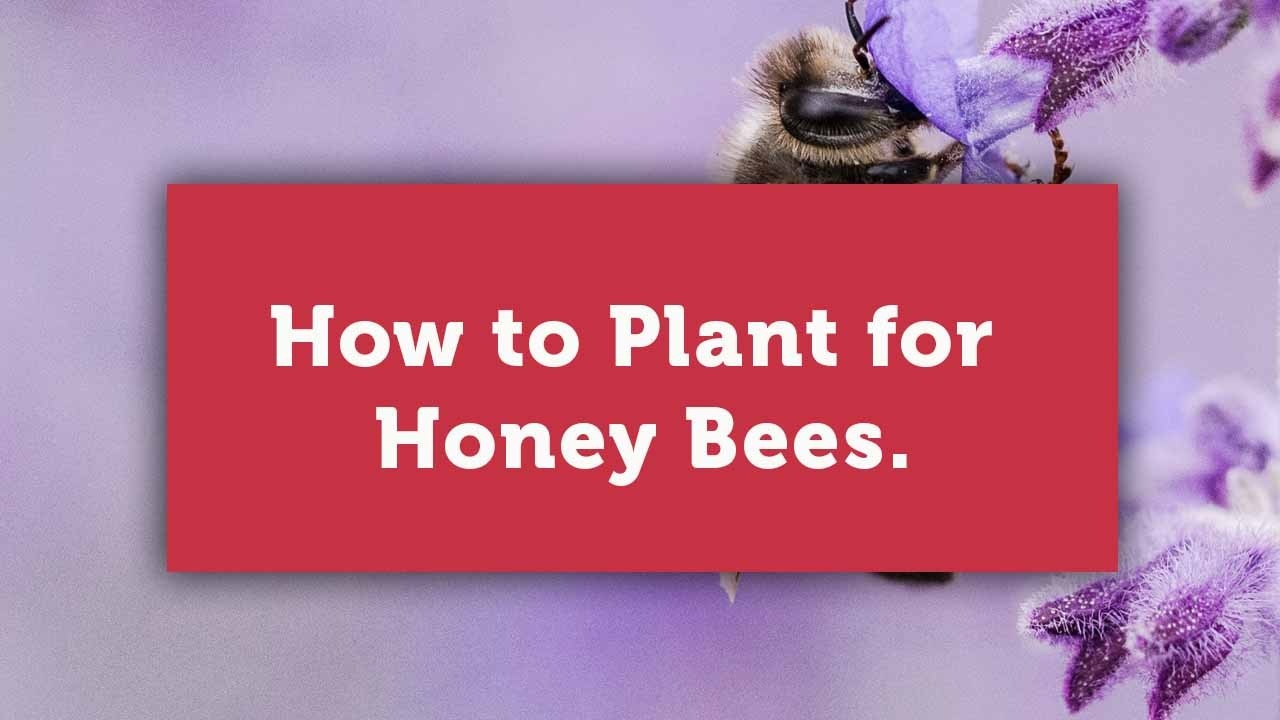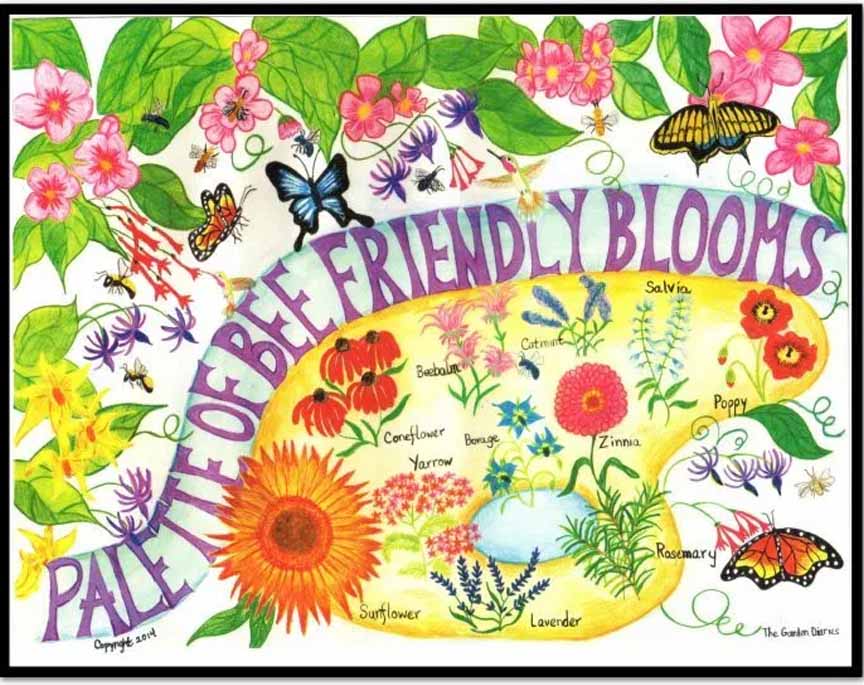
How You Can Create a Pollinator Garden & Help the Bees
Feb 12, 2021Let's talk about planting for bees. Planting nectar-producing flowers is one of the top things you can do to help the pollinators.
Why Honey Bees Need Flowers
Bees visit flowers because they provide food for the bees. Some flowers produce nectar, a watery substance with sugar in it. When a bee visits a flower, she is often looking for nectar. The bee unrolls her proboscis, which is a tube within a tube and half the length of her body, and slurps up the nectar. She will then take it back to the hive where the bees will evaporate the majority of the moisture content from the nectar, turning it into honey.
Some flowers produce pollen, a substance that is rich in protein. When a honey bee visits a flower, she may be gathering pollen and not nectar from it. Pollen is gathered in smaller quantities and mixed with nectar to create a substance we call bee bread. Bee bread is fed to the larvae (a stage of developing baby bees).
It's important to note that not all flowers produce food for honey bees. When looking for flowers to plant for bees, make sure you research whether they, in fact, are a food source for bees first.
How to Start Your Pollinator Garden
Location, Location, Location!
Pick a good spot for your garden. Look for good soil (buy a soil test if you're not sure), sun (full to partial sun), a water source, and diversity. When I say diversity, I mean, do you have a garden full of just roses or do you have a variety of plants?
Start Small
If you don't have the time to create a garden right now, start small by planting some easy flowers like clover or letting your lawn grow a little taller, so the weeds pop up. These little flowers are a great food source for bees and something even the busiest person can do.
The Maximum Impact
One of the most important things you can do in your pollinator garden is plant shoulder crops. These are the plants that bloom in the early spring and fall when there aren't a lot of other flowers blooming. This is an incredibly important time to help the bees. The hives are small and weak and the bees are desperately searching for food.
Some examples of early and late blooming flowers are: Winter Aconite, Blue Bells, Goldenrod, Asters, and Toad Lilies.
Goldenrod is an excellent food source for bees because it flowers into the late fall in many areas of the U.S. Keep in mind that goldenrod can spread so keep it contained or make sure to mow it so that it doesn't take over your garden.
Designing Your Garden
- Make a list of flowers to plant that bloom in the early spring, summer and fall so your garden has a constant flow of food for bees.
- Plant flowers in blocks. A 3'x3' block of just one flower gives the bees an opportunity to find the flower and fill up their entire nectar sac with the nectar from just one type of flower. This action is called flower fidelity and an important reason why honey bees are such great pollinators.
- Diversify your garden by planting multiple blocks, each full of a different kind of flower.
Plant a Meadow!
Another way to feed your bees is by planting a meadow. Here's how you can replace your lawn with a bee-friendly meadow.
- Lay newspaper over your grass.
- Wet newspaper and cover with soil and/or mulch.
- After a couple of months, the grass will be gone, and you can begin planting seeds for your meadow.
Other Ways To Plant for Bees
- Plant flowers in containers. You can have a container garden in your front yard, hanging outside your window or on the roof.
- Plant flowers in the strip of grass between the sidewalk and the street.
- Join your homeowners association and have bee-friendly flowers and meadows added to your neighborhood.
- Plant flowers at your work's office park.
- Talk with the principal about planting flowers at your child's school.
- Seed bomb abandoned lots.
- Talk with your county about letting the grass grow a little taller, so flowers can pop up in parks and along the roadways.
The Negative Affect of Weed Killers
You can't plant for pollinators, and then spray pesticides and herbicides that can harm or kill them! Pulling weeds by hand, using a garden torch or just leaving the weeds to grow are all pollinator-friendly ways to deal with weeds. There are some sprays you can make with household items or buy at the store, but in my personal experience, most of them do not work very well and just because a weed killer is labeled "organic" or "natural" does not mean it won't harm pollinators.
For information about the effects of Roundup, please check out these articles: https://www.consumernotice.
Bee Friendly Blooms Poster
By Claire from theGardendiaries.blog
Pollinator Garden Layout
Plant These for Bees Poster
All of the above images are posters made from illustrations Claire created. Buy one today at Claire's etsy page. They make a great gift for anyone who loves gardening or bees.
Resources:
- Garden Diaries Blog
- Honey Soap Recipe
- National Wildlife Service Native Plant Finder
- Million Pollinator Garden Challenge
Want to learn more about beekeeping?
Join our newsletter for blog updates, beekeeping videos, sales and contests.






